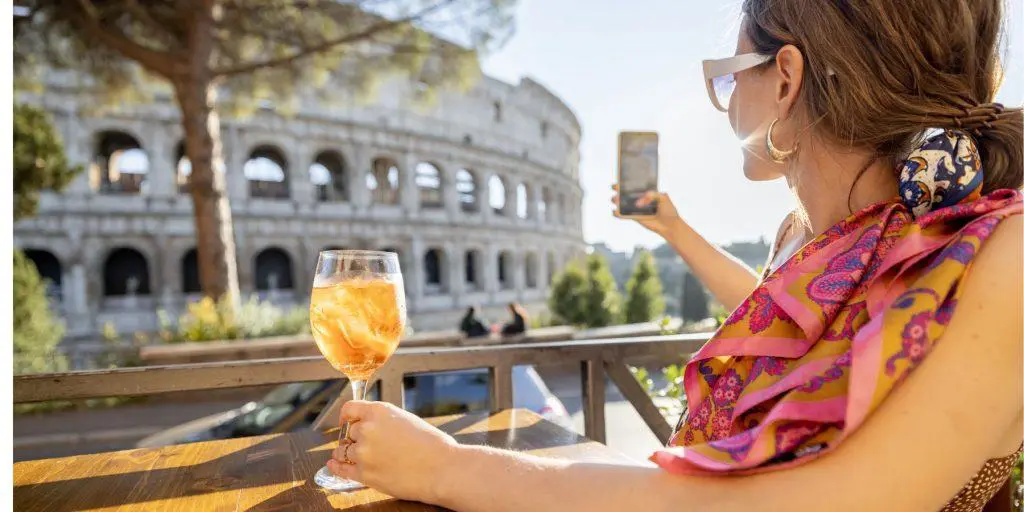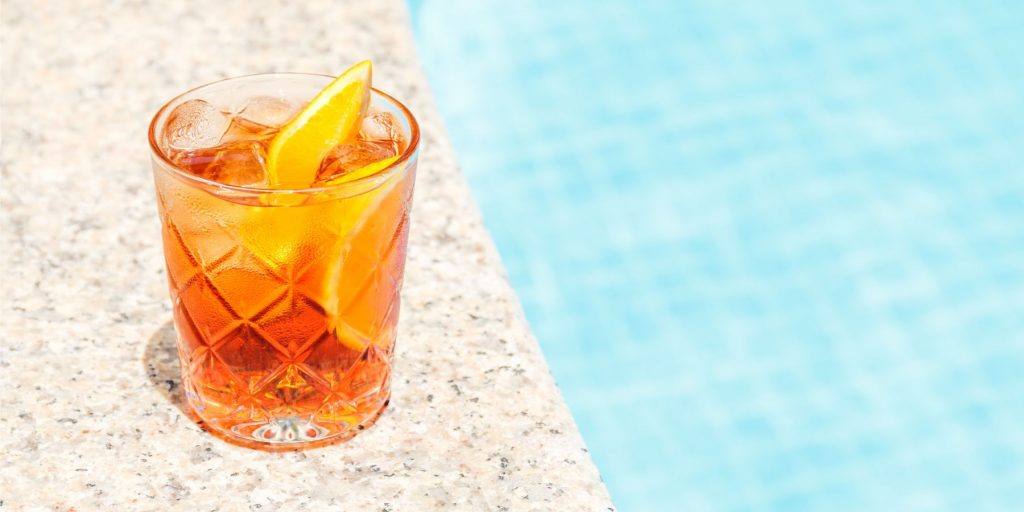Between 6 and 8 p.m., something magical happens across Italy. Cafés fill with conversation, plazas echo with laughter, and glasses clink in a toast to the golden hour — the beloved aperitivo. More than just a pre-dinner drink, aperitivo is a lifestyle, a social ritual that marks the elegant pause between the workday and the evening meal. Rooted in ancient Roman medicine, the term “aperitivo” comes from aperire, meaning “to open” — a reference to stimulating digestion. For centuries, Italians have embraced this moment with herb-infused wines and bitters. But today, a new chapter is unfolding. With a rising wave of sober-curious consumers, bars across Italy are crafting alcohol-free takes on traditional aperitivi, proving that the spirit of aperitivo lives well beyond the spirits themselves.
Turin: where vermouth was born, and reimagined
Turin, the elegant capital of Piedmont, lays claim to the modern aperitivo. It was here in 1786 that distiller Antonio Benedetto Carpano created the first commercial vermouth — a fortified wine infused with herbs and spices — sparking a national obsession. The drink quickly spread from aristocratic salons to working-class cafés, becoming a fixture of evening life throughout northern Italy.
Fast forward 200 years, and Turin’s tradition lives on — just with a new twist. At the opulent Café Platti, one of the city’s oldest cafés, patrons can order an alcohol-free Aperol spritz made with bright-red Sanbitter. Other nonalcoholic options include a mix of orange juice and tonic or a simple Shirley Temple served in style beneath gilded mirrors and chandeliers.

More contemporary in spirit, but no less rooted in tradition, is Affini Dry 0.0 — Turin’s first dry cocktail bar, located in the buzzing Central Market. Focused on sustainability and innovation, the bar offers inventive drinks using local ingredients. Try the Turin Mole, made with juniper water, ginger syrup, lime, and kombucha, or sip on the Coco Punk, crafted with de-alcoholized bitters and tonka bean syrup. The past and future of aperitivo collide here — deliciously.
Milan: bitter roots and modern reinvention
If Turin is the birthplace of vermouth, Milan is the capital of Campari. The city’s vibrant aperitivo culture owes much to this bold, crimson bitter, famously invented in 1860. Milanese evenings are punctuated by the ritual of gathering for a cocktail before dinner — a tradition that holds firm, even as the drinks themselves evolve.
Camparino in Galleria, an institution in the heart of Milan facing the Duomo, honors the city’s bitter legacy while offering inclusive options. Their alcohol-free “Crodino Spritz” mirrors the classic spritz in flavor and presentation, while “Il Dandy,” made with a house-made artichoke and basil cordial, delivers complex herbal notes without the alcohol.
In Milan’s creative Navigli district, Mag Café takes experimentation to the next level. Known for its imaginative mixology, the bar crafts alcohol-free cocktails using 0.0% ABV gins, vermouths, and bitters. One standout: “Da Grande Sarò un Negroni” (“When I Grow Up I’ll Be a Negroni”) — a faithful, alcohol-free rendition of the iconic drink. Bar manager Emanuele Cosi and his team continue to prove that you don’t need spirits to capture the spirit of aperitivo.
Venice: where art and aperitivo meet

Venice, the birthplace of the original spritz, has long blurred the line between elegance and indulgence. Today, that tradition lives on at Arts Bar, a stylish enclave tucked inside the St. Regis Venice. Here, aperitivo becomes an art form — quite literally.
The bar’s seasonal mocktails are inspired by visual art, served in Murano glassware crafted for each drink. The “Brittania 1201,” for instance, is an alcohol-free martini based on Claude Monet’s “Il Canal Grande,” while “Spirit Illusion” takes inspiration from a sculpture of an empty dress to create a spritz with no alcohol — and no compromise.
Overlooking the Grand Canal, Arts Bar is redefining what aperitivo can be. Sophisticated, sensory, and inclusive, its alcohol-free offerings are a fitting tribute to a city that has always celebrated beauty in every form.
Three Italian soda classics to sip instead
Aperitivo culture has spread from Italy’s northern cities to every corner of the country — and so have its alcohol-free counterparts. Whether you’re watching the sun set over Rome’s rooftops or enjoying a seaside pause in Sicily, here are three refreshing analcolico classics you’re likely to find on the menu.
Cedrata
Sweet, sharp, and citrusy, cedrata is a bright yellow soda made from Calabrian citron (cedro) — a fruit similar to lemon but more aromatic and less acidic. Tassoni’s version, created in 1956, remains the most beloved. The safflower-colored fizz is often served over ice with a sprig of basil. Balanced and thirst-quenching, cedrata is perfect for warm evenings.
Chinotto
With its deep amber hue and complex herbal flavor, chinotto is Italy’s answer to cola — but far more sophisticated. Made from the bitter chinotto orange, cinnamon, rhubarb, and other botanicals, this drink carries a distinctive bittersweet taste that pairs beautifully with olives or salty snacks. Its roots trace back to the Ligurian coast, where chinotto trees flourish.
Crodino
Aperitivo in a bottle, Crodino is the nonalcoholic cousin of Campari and Aperol. First produced in 1965 and now part of the Campari Group, its recipe includes 15 herbs and spices, including clove, cardamom, and nutmeg. Served over ice with a slice of orange, it mimics the complexity of an aperitif with none of the alcohol — and all of the flair.
The future of aperitivo is inclusive
Aperitivo is more than just a cocktail — it’s a cultural rite that brings people together. As Italy’s bar scene evolves, so too does its approach to inclusion. The rise of aperitivi analcolici signals a shift: one that honors tradition while embracing change, allowing everyone to take part in the ritual, regardless of what’s in their glass.
From historic cafés in Turin to cutting-edge bars in Venice, Italy is proving that sobriety and sophistication are not mutually exclusive. Whether you’re abstaining for the night or the long term, there’s never been a better time to say ciao to the alcohol-free side of aperitivo.




